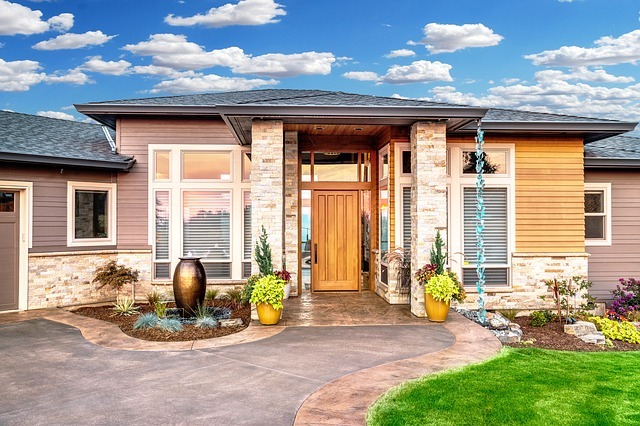In most Australian states living further inland means you’ll find yourself subjected to some more intense weather, especially in summer. New home builders in Echuca, or Mildura will know this well already! Especially as temperatures are globally rising and concerns with man-made environmental pollutants are growing, today’s home builders face new challenges in keeping cool in a sustainable way. Therefore, as part of the criteria for your new house, you might want to consider factoring in design that is able to cope well with extreme temperatures. This is especially so you can reduce rapid fluctuations between hot and cool which can be hazardous to health, if not, quite uncomfortable. Read below for an introduction to bioclimatic housing and how it will work for your next new home. Housing design that is bioclimatic considers the relationship between the climate, living organisms (us humans) and the form and composition of a building. Paying attention to this therefore, means you’ll end up with a home that has passive solar design, great energy efficiency and uses sustainable means and materials to do so. Reducing the footprint of your home means that less resources will be required to keep up with the consumption of its occupants, such as less electricity use. This translates to lower financial outgoings, something many household budgeters would be happy to hear!Solar systems that are thermal and photovoltaic systems are common strategies to incorporate when looking to reduce energy use in both summer and winter. Not only this, but shielding your home from the sun is imperative. You might consider using insulation, sun shading and cross ventilation in order to achieve thermal comfort. Although there is a minimum energy efficiency standard required of all of today’s new homes, exceeding the minimum requirements is advisable so you can, at the design stage, reduce the need for active systems to heat and cool the house. Of course, some of this can be retrofitted (such as solar panels) but getting things like orientation, window placement and airflow right from the start is highly advised. Other options that can provide passive cooling to a residence include basements with cool tubes or earth sheltering. Night ventilation such as a flywheel system might also be considered in order to take in the cooler night area and expel heat gained indoors throughout the day. Water walls, using recycled tank water can also have insulating properties or be used to support an evaporative cooling system. In hotter climates, reducing heat gain should be the primary focus as the energy to expel it exceeds the demand of heating.A designer experienced in this area may take into account the microclimate of the building that you are preparing to erect. Unlike the inner city’s compact spaces rife with concrete and reflective surfaces, building a detached house can more easily be adapted to complement the your site’s condition. Following sufficient analysis, things such as landscaping, atriums and rain gardens might be incorporated to enhance the microclimate that you are working with.
Housing design that is bioclimatic considers the relationship between the climate, living organisms (us humans) and the form and composition of a building. Paying attention to this therefore, means you’ll end up with a home that has passive solar design, great energy efficiency and uses sustainable means and materials to do so. Reducing the footprint of your home means that less resources will be required to keep up with the consumption of its occupants, such as less electricity use. This translates to lower financial outgoings, something many household budgeters would be happy to hear!Solar systems that are thermal and photovoltaic systems are common strategies to incorporate when looking to reduce energy use in both summer and winter. Not only this, but shielding your home from the sun is imperative. You might consider using insulation, sun shading and cross ventilation in order to achieve thermal comfort. Although there is a minimum energy efficiency standard required of all of today’s new homes, exceeding the minimum requirements is advisable so you can, at the design stage, reduce the need for active systems to heat and cool the house. Of course, some of this can be retrofitted (such as solar panels) but getting things like orientation, window placement and airflow right from the start is highly advised. Other options that can provide passive cooling to a residence include basements with cool tubes or earth sheltering. Night ventilation such as a flywheel system might also be considered in order to take in the cooler night area and expel heat gained indoors throughout the day. Water walls, using recycled tank water can also have insulating properties or be used to support an evaporative cooling system. In hotter climates, reducing heat gain should be the primary focus as the energy to expel it exceeds the demand of heating.A designer experienced in this area may take into account the microclimate of the building that you are preparing to erect. Unlike the inner city’s compact spaces rife with concrete and reflective surfaces, building a detached house can more easily be adapted to complement the your site’s condition. Following sufficient analysis, things such as landscaping, atriums and rain gardens might be incorporated to enhance the microclimate that you are working with.
I’m a 20-something stay-at-home mother and wife. I have an amazing husband, a beautiful daughter, two loving dogs, and a lazy cat. I wouldn’t change my life for anything! I love to read, listen to music, cook and blog!

Speak Your Mind